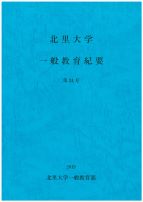Volume 24
Displaying 1-9 of 9 articles from this issue
- |<
- <
- 1
- >
- >|
Research Articles
-
Article type: Research Articles
2019 Volume 24 Pages 1-21
Published: March 30, 2019
Released on J-STAGE: August 23, 2019
Download PDF (1098K) -
Article type: Research Articles
2019 Volume 24 Pages 23-34
Published: March 30, 2019
Released on J-STAGE: August 23, 2019
Download PDF (296K)
Research Note
-
Article type: Research Note
2019 Volume 24 Pages 35-47
Published: March 30, 2019
Released on J-STAGE: August 27, 2019
Download PDF (818K)
Translations
-
Article type: Translations
2019 Volume 24 Pages 49-82
Published: March 30, 2019
Released on J-STAGE: August 27, 2019
Download PDF (760K) -
Article type: Translations
2019 Volume 24 Pages 83-88
Published: March 30, 2019
Released on J-STAGE: August 27, 2019
Download PDF (385K) -
Article type: Translations
2019 Volume 24 Pages 89-95
Published: March 30, 2019
Released on J-STAGE: August 27, 2019
Download PDF (308K)
-
Article type: Appendix
2019 Volume 24 Pages 97-100
Published: March 30, 2019
Released on J-STAGE: August 27, 2019
Download PDF (149K) -
Article type: Appendix
2019 Volume 24 Pages 101
Published: March 30, 2019
Released on J-STAGE: August 27, 2019
Download PDF (66K) -
Article type: Appendix
2019 Volume 24 Pages 102-104
Published: March 30, 2019
Released on J-STAGE: August 27, 2019
Download PDF (133K)
- |<
- <
- 1
- >
- >|
